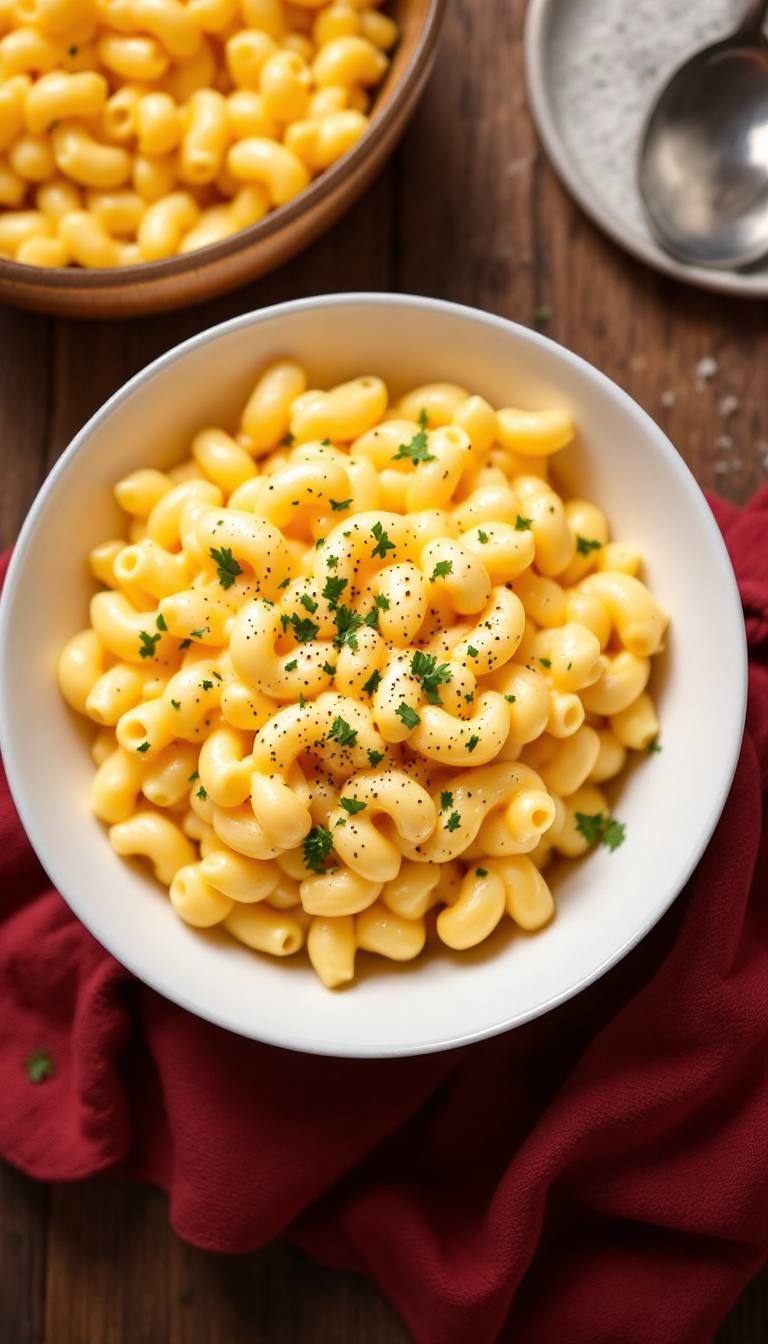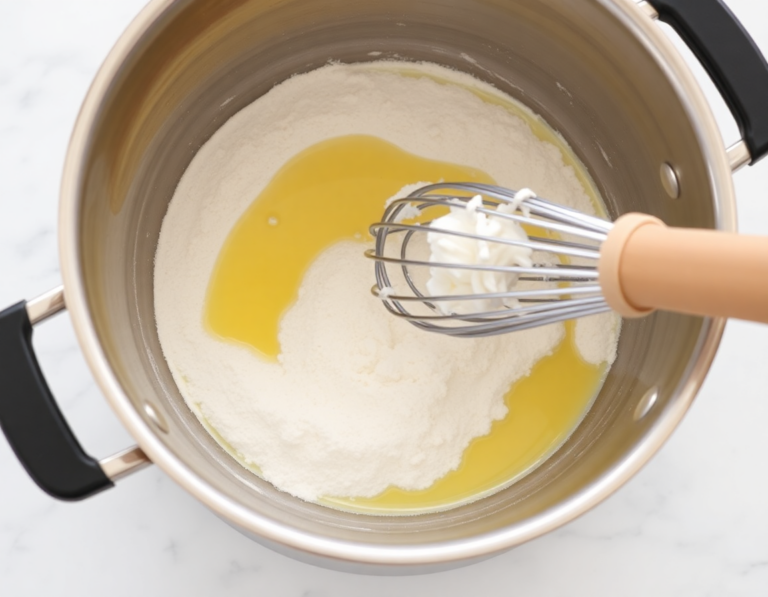Oh, the sheer comfort of a creamy mac and cheese—it’s like wrapping up in a warm blanket on a chilly evening. I remember the first time I had it, the cheesy aroma wafting through the house as the fall leaves danced outside the window. With a hint of nostalgia and a touch of indulgence, this recipe is your ticket to pure culinary bliss—each bite a velvety embrace you simply can’t resist.
Steps
- Begin by bringing a pot of salted water to a boil. Add the pasta and cook it for one minute less than the package instructions suggest, then drain and rinse with cool water to halt further cooking. Set the pasta aside.
- In a small saucepan, warm the milk over low heat until it’s just warm, then turn off the heat and cover it. This will ensure the milk is ready to combine with the other ingredients without clumping.
- In a large pot, melt the butter over medium heat. Sprinkle in the flour and whisk continuously for about 1-2 minutes until it becomes light brown and has a toasted aroma.
- Gradually whisk in the warm milk, adding it in thirds and whisking between each addition until the mixture is smooth and begins to thicken. Continue to whisk until the sauce just starts to simmer and thickens, then simmer for an additional minute.
- Season the sauce with salt, pepper, and optionally, nutmeg and mustard powder. These spices add depth to the flavor profile of the cheese sauce.
- Reduce the heat to low and stir in the cream cheese until it is mostly melted. Gradually add the shredded cheese, stirring until it fully melts and the sauce is smooth. Adjust the seasoning with additional salt and pepper to taste.
- Combine the cooked pasta with the cheese sauce, ensuring the sauce thoroughly coats the pasta. Allow the mixture to sit covered for five minutes, during which time the pasta will absorb some of the sauce. Stir once more before serving, adding reserved pasta water if needed to adjust the sauce’s consistency.
Ingredients
- 1 pound (450g) dried pasta (such as elbow macaroni, shells, or penne)
- 4 cups (945ml) whole or reduced-fat milk
- 4 tablespoons (56g) butter
- 3 tablespoons (24g) all-purpose flour
- 1/2 teaspoon fine sea salt, plus more for cooking pasta
- 1/2 teaspoon freshly ground black pepper
- 1/8 teaspoon grated nutmeg (optional)
- 1/8 teaspoon mustard powder (optional)
- 2 ounces (56g) cream cheese, softened (optional)
- 1 pound (450g) shredded cheese (such as sharp white cheddar, or a mix of cheddar, Gruyere, Monterey Jack, American, or similar melty cheeses)
Nutritional Values
Calories: 4568 | Total Fat: 255.2g | Saturated Fat: 145.6g | Cholesterol: 716.8mg | Sodium: 4517.6mg | Carbohydrate: 389.6g | Dietary Fiber: 16g | Total Sugars: 18.4g | Protein: 174.4g
FAQ
- What type of pasta works best for mac and cheese?
- Pasta with nooks and crannies, like elbow macaroni or shells, is ideal because they effectively hold onto the creamy sauce.
- Can I use pre-shredded cheese for the sauce?
- While convenient, pre-shredded cheese doesn’t melt as smoothly. It’s recommended to grate cheese yourself for a better texture.
- What is the secret ingredient for extra creaminess?
- Adding a small amount of cream cheese to the cheese sauce gives it a silky, creamy texture.
- How can I store leftover mac and cheese?
- Refrigerate covered leftovers for up to 3 days, or freeze them in a suitable container for up to 2 months. Reheat gently, adding a splash of milk if necessary to loosen the sauce.
- Is it possible to bake this mac and cheese recipe?
- Yes, after mixing the pasta with the cheese sauce, transfer it to a baking dish, sprinkle with breadcrumbs and cheese, and bake at 375°F (190°C) for 25 to 30 minutes until golden and bubbling.
Tips
- Use Freshly Grated Cheese: Opt for grating your own cheese instead of using pre-shredded varieties. Freshly grated cheese melts more smoothly, enhancing the creaminess of the sauce.
- Incorporate Cream Cheese: Adding a small amount of cream cheese can significantly enhance the texture of your mac and cheese, making it silkier and richer without overpowering the flavor.
- Save Pasta Water: Retain a cup of the starchy pasta water before draining. This can be added to the sauce if it becomes too thick, helping to achieve your preferred consistency.
- Adjust Sauce to Taste: If you find the sauce too abundant, set aside 1 to 2 cups before mixing in the pasta. You can always add more later if needed, and any leftover sauce can be stored and used as a delicious accompaniment for other dishes.
Equipment
- High-sided Pot or Dutch Oven
- Small Saucepan
- Whisk


